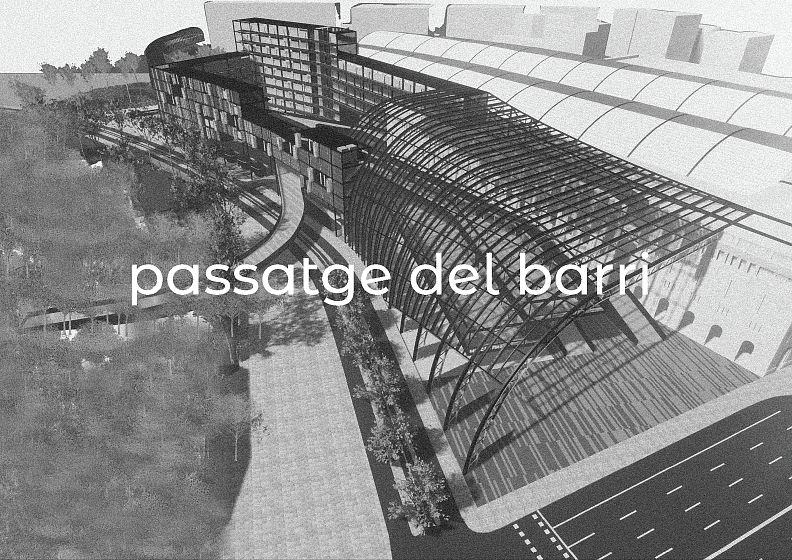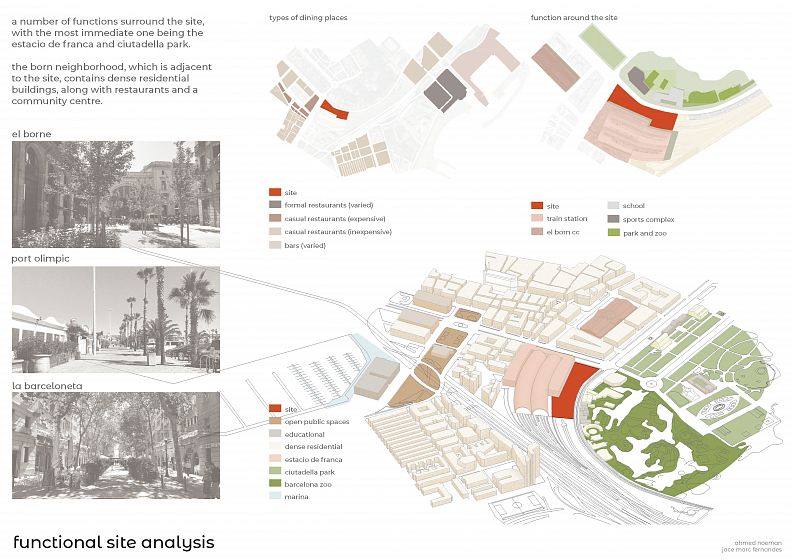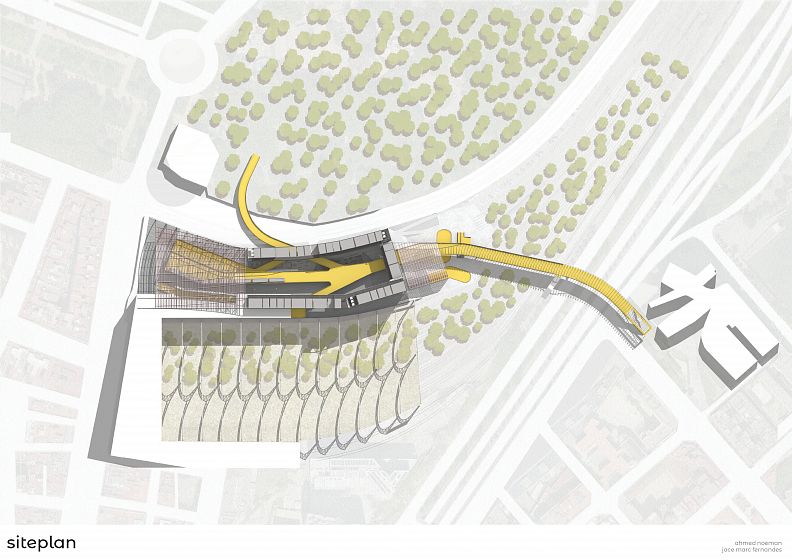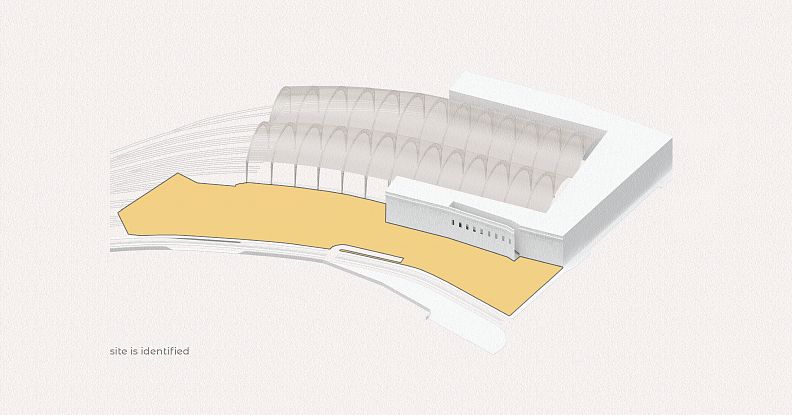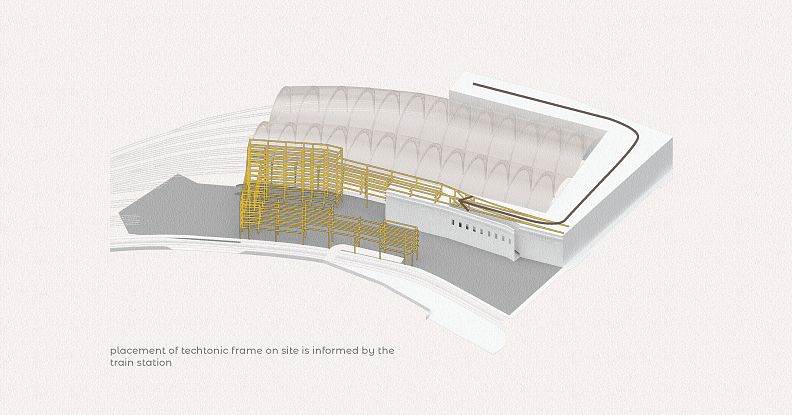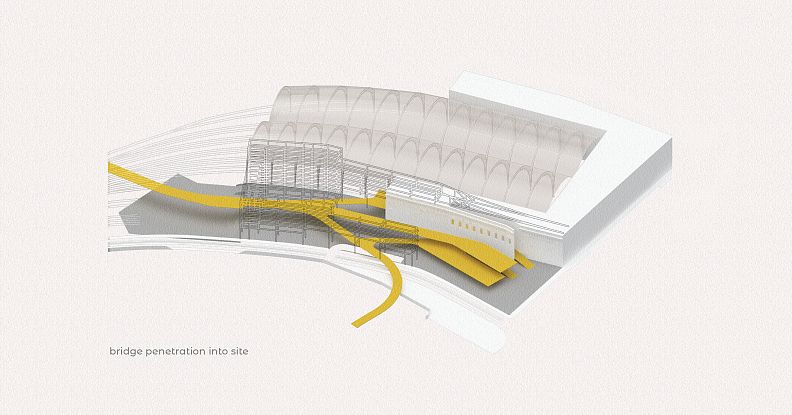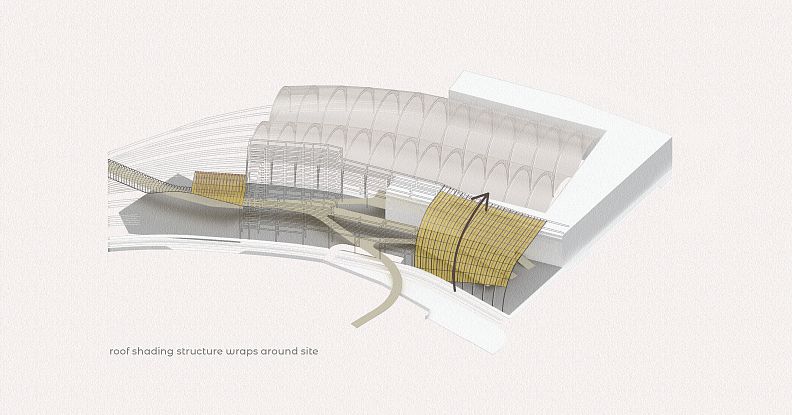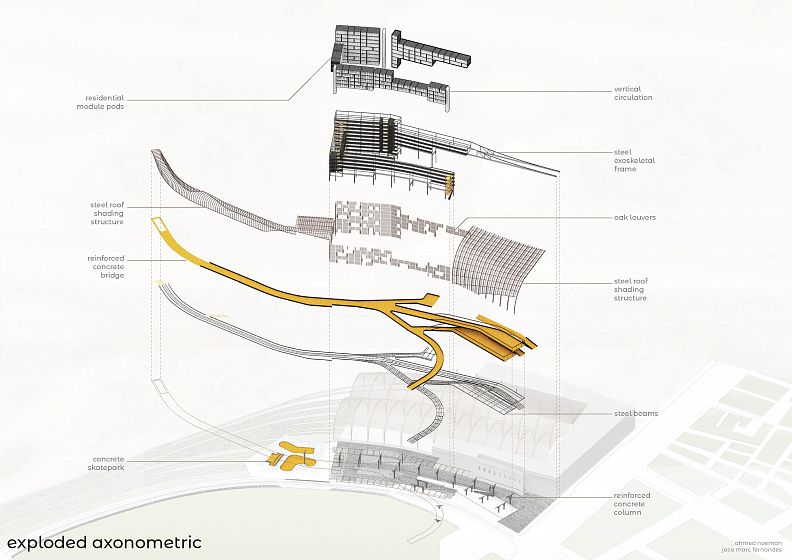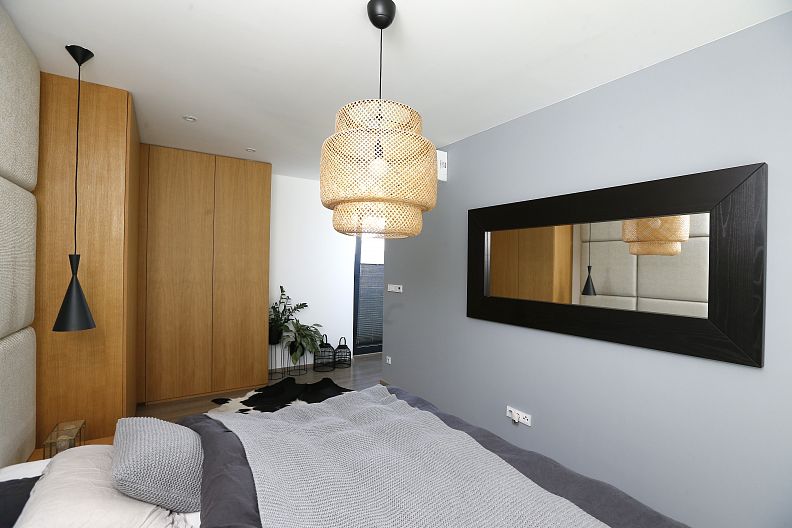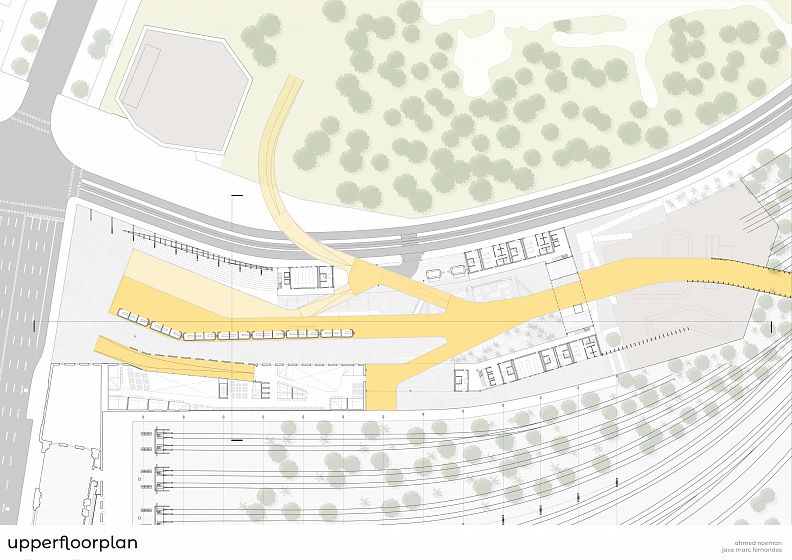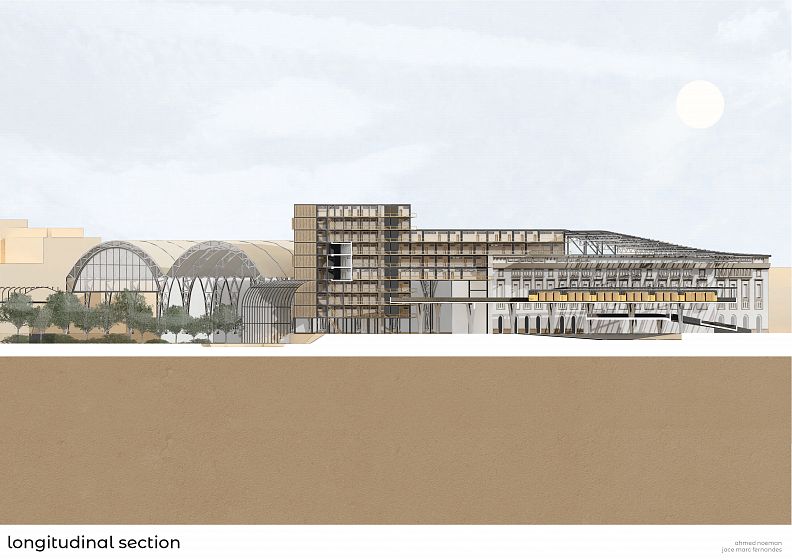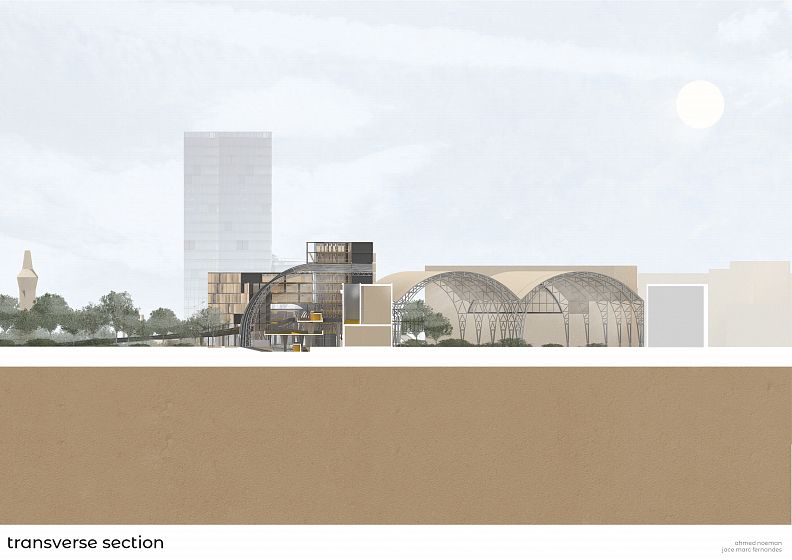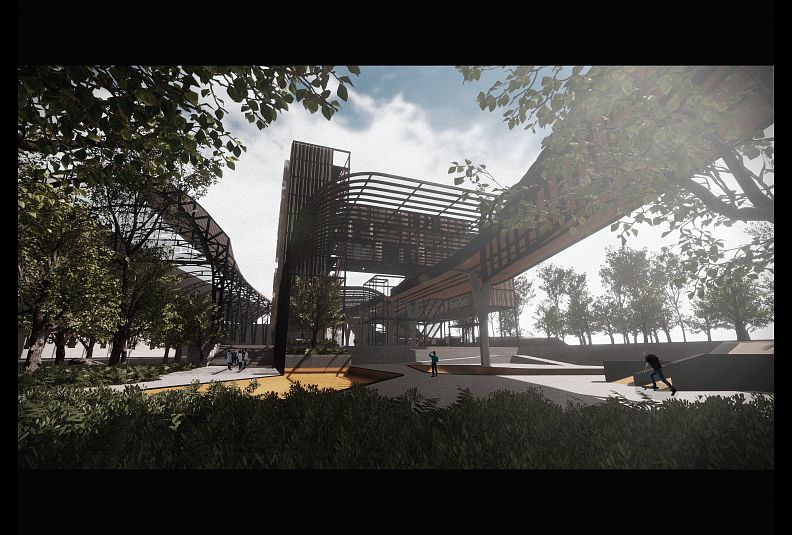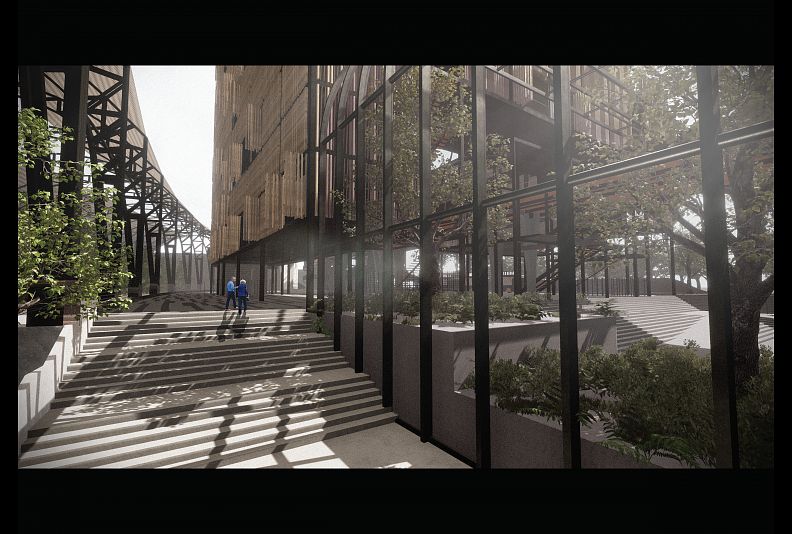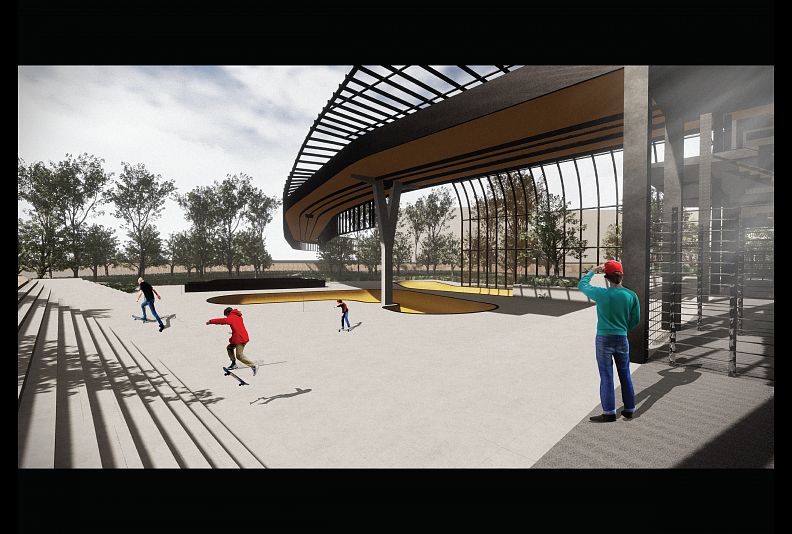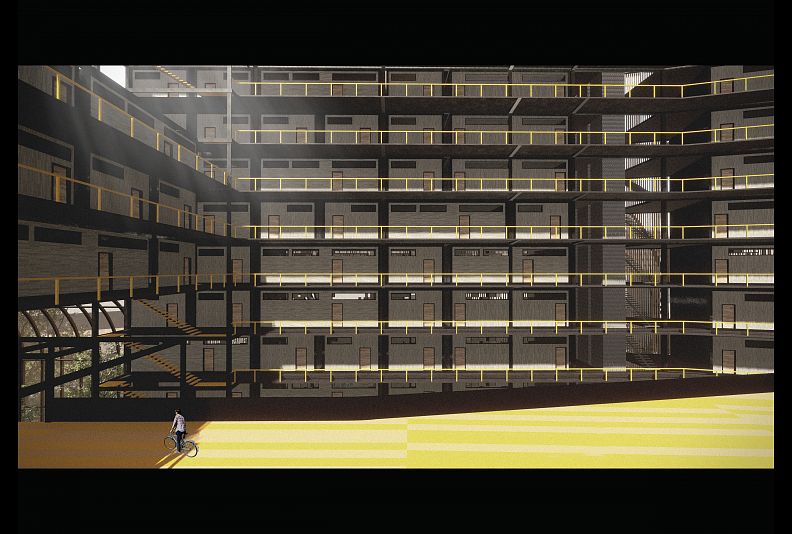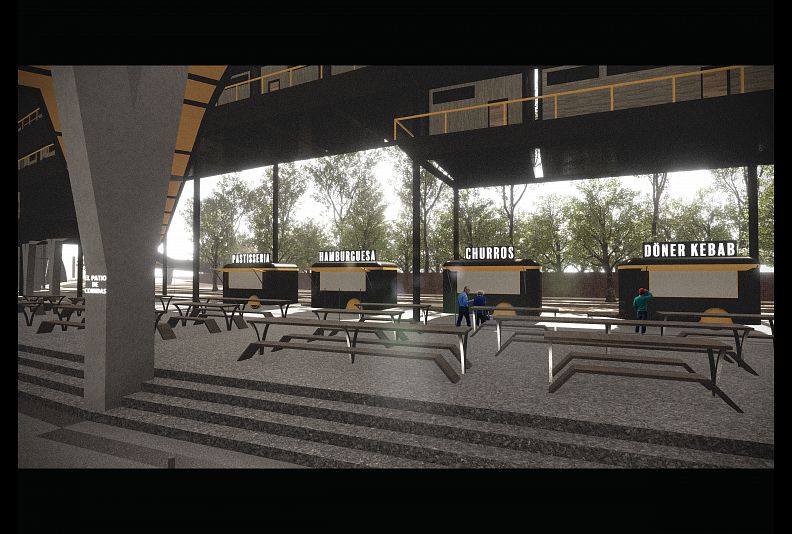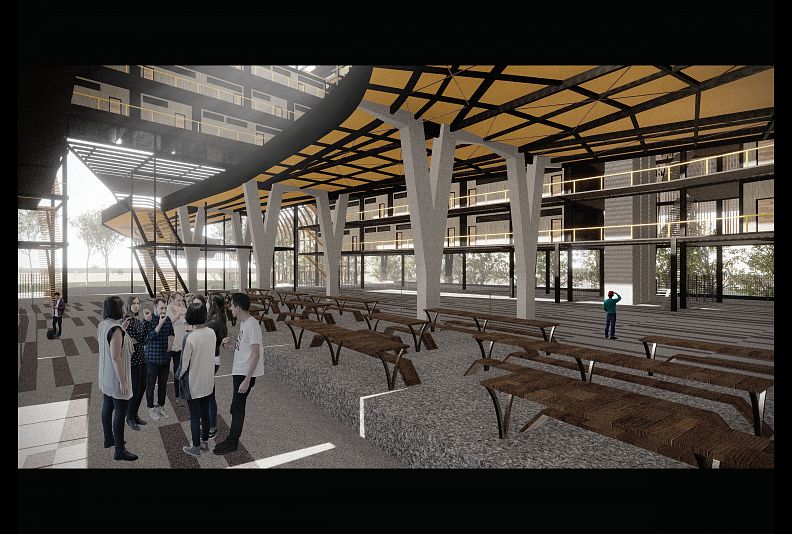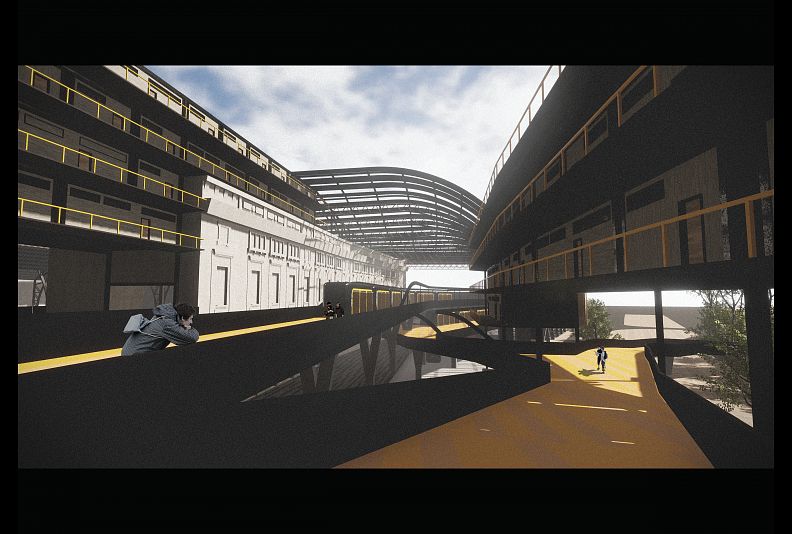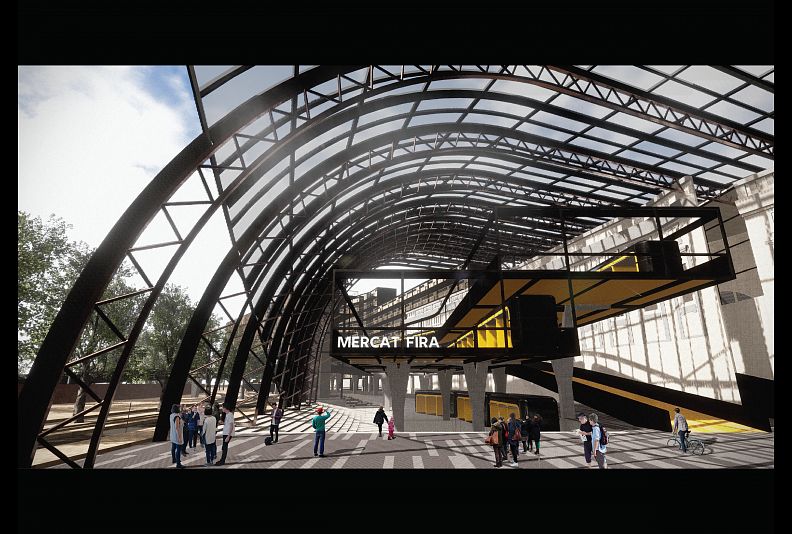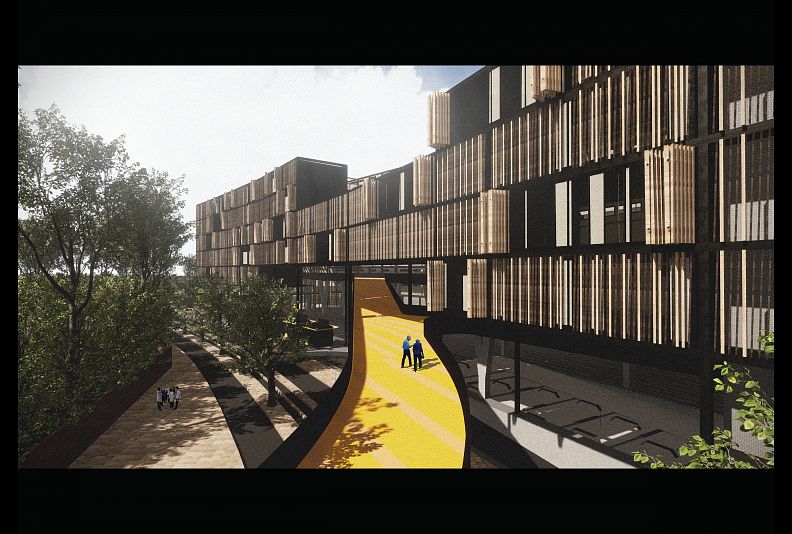Passatge del Barri

Idea projektu
Passatge del Barri, a Catalan phrase for “passage of the neighbourhood”, strives to become an urban node within a neglected part of the city of Barcelona, Spain. Situated alongside the Estació de França, adjacent to the El Gòtic neighbourhood, the project aims to activate a site that has long been neglected and which has seen significantly less footfall in recent decades. The project also aims to bridge the gap created by more recent forms of infrastructure, such as the Ronda Litoral, which has since carved through numerous neighbourhoods within the city of Barcelona.
A close look at recent urban growth trends of Barcelona reveal numerous improvements in the built form of the city, such as in infrastructure, particularly during and after the 1992 summer Olympics. This contributed to an overall increase in the quality of life within the city. Several of these infrastructural projects consisted of the Ronda de Dalt and the Ronda Litoral, both of which are ring roads that connect the northern and southern part of Barcelona respectively. These allowed motorists to commute directly through the dense urban fabric of Barcelona, which was unlike anything experienced previously. Despite these rings roads providing improved connectivity, this had increased car traffic and obstructed free pedestrian movement between various neighbourhoods. This has since posed a great threat to the urban life of multiple neighbourhoods across the city and has risked causing once vibrant areas to fall into despair. Such is the case at the site of the Passatge del Barri, which currently hosts a parking lot and witnesses very little activity. A closer analysis of the situation, however, has revealed an opportunity in terms of the ability to activate a highly valuable site within the city, thus contributing to and improving the urban fabric of the city.
Popis projektu
Consisting of a marketplace, a housing cluster and a space for communal gathering, the Passatge del Barri brings three programmes close to the heart of Barcelona’s culture and combines them together to benefit the city in a number of ways. This is first achieved by the site acting as a node within the area around which users can orient themselves with. The project also bridges the gap over the Ronda Litoral, which enables the flow of people into and out of the Barceloneta neighbourhood along with improving connectivity between all major surrounding areas.
The project aims to activate the site by firstly building off of Barcelona’s market culture, which is seen in the presence of a flea market on the ground floor plaza of the site. This market extends onto the bridge portion of the site and encourages visitors and commuters to engage with the site whilst travelling from one area to another. Other public functions, such as a food truck station and an outdoor skate park are further geared at drawing in more crowds and subsequently activating surrounding areas. A residential social housing portion of the project, which sits atop the pedestrian bridge and adjacent to the Ciutadella Park, provides affordable housing units for eligible residents. The modularity of these units, which fit within a tectonic steel frame, allow for flexibility and adaptability, with each unit capable of being retrofitted or changed completely if needed.
The project addresses these issues of connectivity, infrastructure, and site activation through a juxtaposition of form. A rectilinear language is used to define the inhabited spaces of the projects, such as in each individual residential pod and in the overall linear tectonic language employed across the site. On the other hand, a curvilinear language, which is borrowed directly from the monumental curvilinear arches of the Estació de França, provides shade for much of the public portion of the site, mirroring the same function that the arches serve within the adjacent station itself. This ortho-curvilinear relationship helps to clearly define all of the separate elements across the site whilst maintaining a homogeneous system of parts.
Technické informace
The primary material employed in both the housing portion and the arched shading structure is steel, whilst a combination of a steel shell and prefabricated panels are used within the walls of each housing pod. The flea market and food truck station consist of mobile units capable of being moved and set up in different parts of the site.
The housing tower exists partially as a free standing tower, but also through direct intervention with the train station. This aims to pay homage to the architectural value of the station and demonstrates a clear relationship between the old and the new, ultimately acknowledging Barcelona’s rich history and paving the way for an even richer future.
Spoluautoři
Jace Marc Fernandes
